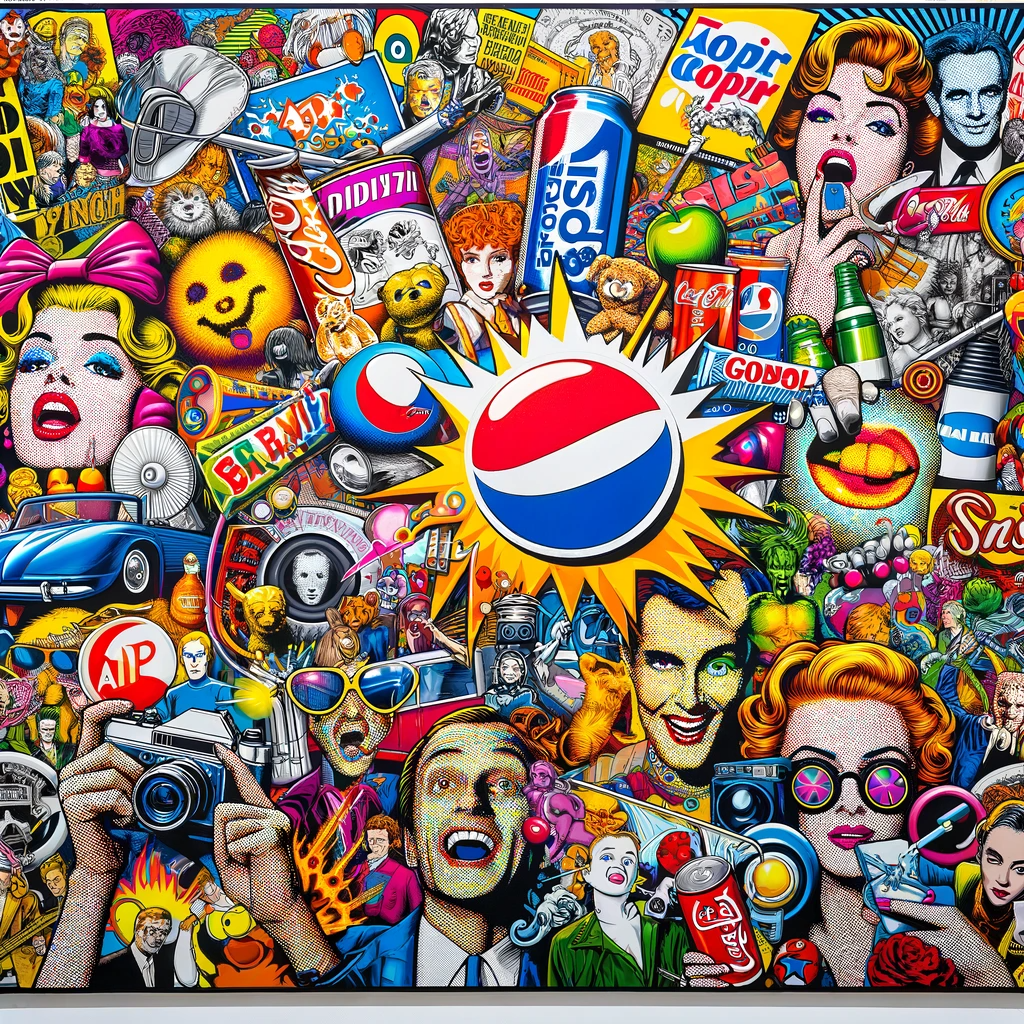In a burst of color and iconic imagery, Pop Art emerged in the mid-to-late 1950s as a dynamic and energetic movement, challenging traditions and celebrating the everyday. Mirroring the rise of mass culture, Pop Art is characterized by themes and techniques drawn from popular mass culture, including advertising, comic books, and everyday cultural objects.
The Birth of Pop Art
Pop Art was born in Britain during the post-World War II era, a time of prosperity, mass consumerism, and dramatic social changes. It was a reaction to the more personal and emotional art movements that preceded it, such as Abstract Expressionism. Artists of the Pop Art movement embraced the world of advertising, pop music, comic books, and Hollywood films, aiming to blur the boundaries between 'high' art and 'low' culture.
Pop Art's Aesthetic: Everyday Objects Elevated
The imagery used in Pop Art is usually taken from everyday items, product packaging, celebrity photos, and other elements of popular culture. These everyday images are often presented with bold colors, commercial techniques, and a lack of personal expression. This results in art that feels both familiar and new, inviting the viewer to see the extraordinary in the ordinary.
Iconic Pop Artists: Warhol and Lichtenstein
Two artists truly personify the Pop Art movement: Andy Warhol and Roy Lichtenstein.
Andy Warhol, an American artist, is perhaps the most well-known figure in Pop Art. He is famous for his screen prints and paintings of Campbell's Soup cans and images of celebrities, such as Marilyn Monroe, which he replicated repeatedly to mimic the effect of mass production. His work questioned the values of American consumer culture and the role of the artist.
Roy Lichtenstein, another prominent American pop artist, was best known for his comic-strip-style paintings. He replicated the Ben-Day dot system used in comic books and newspapers, creating works that appeared mechanically produced, although they were meticulously hand-painted. Lichtenstein's work often incorporated humor, satire, and irony, further challenging traditional views of art.
The Legacy of Pop Art
Pop Art challenged the status quo by questioning the nature of art and examining the growing power of media and consumerism in society. Its effects continue to resonate in contemporary art forms, influencing a wide range of disciplines, from graphic design and fashion to film and music.
Pop Art also paved the way for later art movements, such as Conceptual Art and Neo-Pop. Its influence is still felt in contemporary art, where artists continue to draw on mass culture for inspiration.
In a world increasingly dominated by mass media and consumer culture, Pop Art remains as relevant today as it was during its inception. It serves as a vibrant, colorful mirror reflecting the spirit of its times, inviting us to question, appreciate, and engage with the world around us.
